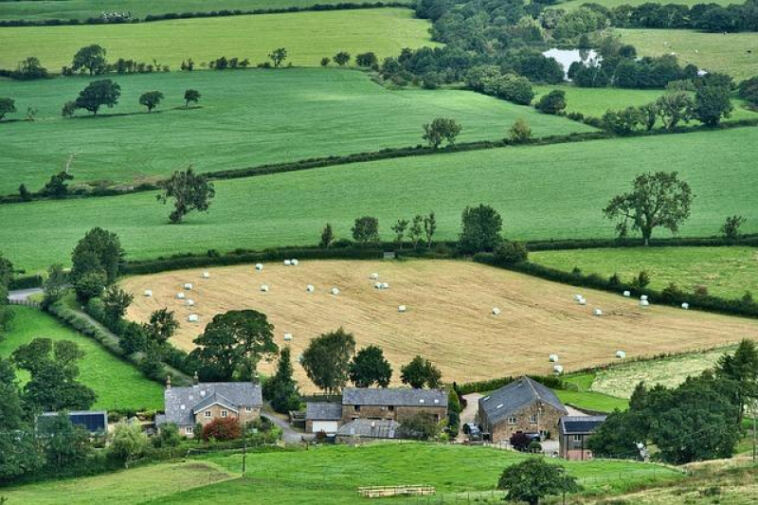- Like
- SHARE
- Digg
- Del
- Tumblr
- VKontakte
- Flattr
- Buffer
- Love This
- Save
- Odnoklassniki
- Meneame
- Blogger
- Amazon
- Yahoo Mail
- Gmail
- AOL
- Newsvine
- HackerNews
- Evernote
- MySpace
- Mail.ru
- Viadeo
- Line
- Comments
- Yummly
- SMS
- Viber
- Telegram
- JOIN
- Skype
- Facebook Messenger
- Kakao
- LiveJournal
- Yammer
- Edgar
- Fintel
- Mix
- Instapaper
- Copy Link
In the world of agriculture, innovation is the name of the game. And when it comes to cannabis cultivation, the game is no exception. In recent years, a new trend has emerged in the industry – vertical farming. This revolutionary approach has not only transformed the way cannabis is grown, but it has also proven to yield high returns for farmers. Join us as we delve into the world of vertical cannabis farming and explore how this cutting-edge technique is changing the game for growers everywhere.
Unleashing the Potential of Vertical Cannabis Farming
Vertical cannabis farming has emerged as a game-changer in the industry, offering a multitude of benefits for growers looking to maximize their yields. By utilizing the vertical space, growers can increase their production capacity significantly, making it a more efficient and sustainable option than traditional horizontal farming methods.
One of the key advantages of vertical cannabis farming is the ability to control environmental factors more precisely, such as lighting, humidity, and temperature. This precision allows growers to create the ideal conditions for plant growth, resulting in higher yields and a more consistent quality of the final product. Additionally, vertical farming requires less water and nutrients compared to traditional methods, making it a more environmentally friendly option.
With the rapid advancements in technology, vertical cannabis farming is constantly evolving, with new innovative solutions being developed to further optimize the growing process. From automated systems for irrigation and nutrient delivery to advanced LED lighting systems, growers have a plethora of tools at their disposal to maximize yields and produce top-quality cannabis products.
Revolutionizing Cultivation Techniques for Greater Yields
Innovating vertical cannabis farming is the key to revolutionizing cultivation techniques for achieving greater yields. By utilizing space more efficiently and effectively, vertical farming offers a sustainable solution to increasing productivity and maximizing crop output.
One of the major advantages of vertical cannabis farming is the ability to control environmental factors such as light, temperature, and humidity. This precise control allows for optimal growing conditions, resulting in healthier plants and higher yields. Additionally, vertical farming reduces the risk of pests and disease, leading to a more sustainable and eco-friendly cultivation process.
With the advancement of technology and the development of vertical farming systems, growers can now achieve unparalleled levels of productivity and efficiency. By incorporating innovative techniques such as hydroponics and aeroponics, vertical cannabis farming is paving the way for a new era of high-yield cultivation that is both cost-effective and environmentally sustainable.
Maximizing Space Efficiency Through Vertical Growing Systems
Vertical growing systems have revolutionized the way we cultivate cannabis, allowing farmers to maximize space efficiency and achieve high yields. By utilizing innovative techniques and cutting-edge technology, vertical farming has become a game-changer in the industry.
One of the key advantages of vertical cannabis farming is the ability to grow more plants in a smaller area. This not only saves space but also increases productivity and overall yields. With vertical growing systems, cultivators can stack plant beds on top of each other, making the most of every square foot.
| Benefits of Vertical Growing Systems: |
|---|
| 1. Maximizes space efficiency |
| 2. Increases yields |
| 3. Allows for better light distribution |
Implementing Cutting-Edge Technology for Optimal Harvests
Vertical cannabis farming is revolutionizing the way we approach cultivation, allowing for higher yields and more efficient use of space. By implementing cutting-edge technology such as automated climate control systems and LED lighting, growers can optimize growth conditions and maximize harvests.
One key advantage of vertical farming is the ability to stack multiple levels of plants, utilizing vertical space to its full potential. This innovative approach not only increases the overall yield per square foot but also promotes better airflow and light distribution, resulting in healthier plants and higher quality crops.
With the use of advanced data analytics and monitoring systems, growers can track and adjust environmental factors in real-time, ensuring optimal growing conditions at all times. By combining technological advancements with traditional cultivation practices, vertical cannabis farming is setting a new standard for sustainable and efficient agricultural practices.
Enhancing Sustainability Practices in Vertical Cannabis Farming
Innovating vertical cannabis farming practices is crucial for enhancing sustainability in the industry. By maximizing space and utilizing advanced growing techniques, growers can increase yields while reducing environmental impact. One way to achieve this is through the implementation of LED lighting systems. These energy-efficient lights not only provide the ideal spectrum for cannabis growth but also help lower electricity consumption.
Moreover, incorporating water recycling systems is another key aspect of improving sustainability in vertical cannabis farming. By reusing water in a closed-loop system, growers can minimize water waste and reduce their overall environmental footprint. This practice not only conserves water resources but also helps maintain optimal growing conditions for the plants. Additionally, utilizing organic and sustainable growing mediums, such as coconut coir or perlite, can further enhance the eco-friendliness of vertical cannabis farming operations.
Furthermore, integrating automation and remote monitoring technologies can streamline operations and enhance efficiency in vertical cannabis farms. Efficient use of resources, such as water and nutrients, can be achieved through the implementation of automated irrigation and fertilization systems. By closely monitoring plant health and environmental conditions remotely, growers can make data-driven decisions to optimize growth and maximize yields. Ultimately, by embracing innovation and sustainability practices, vertical cannabis farming can pave the way for a more eco-conscious and productive industry.
Q&A
Q: What is vertical cannabis farming?
A: Vertical cannabis farming is a method of cultivating cannabis plants in stacked layers vertically, rather than horizontally in a traditional greenhouse or outdoor setting.
Q: How does vertical cannabis farming differ from traditional methods?
A: Vertical farming maximizes space utilization by growing plants upwards instead of outwards, allowing for higher yields in a smaller footprint. This method also offers greater control over environmental factors like light, temperature, and humidity.
Q: What are the benefits of high yields in vertical cannabis farming?
A: High yields in vertical cannabis farming can lead to increased profits for growers, as more plants can be grown in the same amount of space. This method also allows for a more efficient use of resources such as water and nutrients.
Q: What innovations are being made in vertical cannabis farming?
A: Innovations in vertical cannabis farming include the use of advanced lighting systems, automated irrigation systems, and remote monitoring technology to optimize plant growth and crop yield. Researchers are also exploring ways to enhance nutrient delivery and plant genetics for increased productivity.
Q: Are there any challenges associated with vertical cannabis farming?
A: Some challenges of vertical cannabis farming include the initial investment in infrastructure and technology, as well as ensuring proper ventilation and air circulation in a stacked growing environment. Additionally, maintaining uniform plant growth and preventing pests and diseases can be more difficult in a vertical system.
In Retrospect
In conclusion, vertical cannabis farming is revolutionizing the way we grow and harvest this versatile plant. With innovative technologies and techniques, farmers are able to maximize yields and produce high-quality cannabis in a more efficient and sustainable manner. As the industry continues to evolve, vertical farming will play a key role in meeting the growing demand for cannabis while minimizing environmental impact. So, whether you’re a seasoned pro or just starting out, consider incorporating vertical farming into your cannabis cultivation practices for a greener, higher-yield future.


